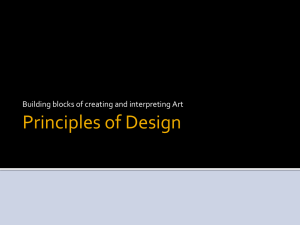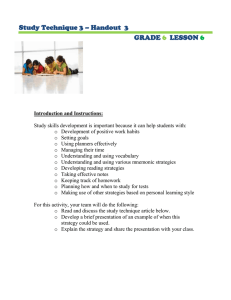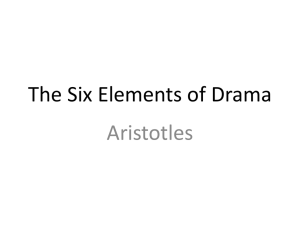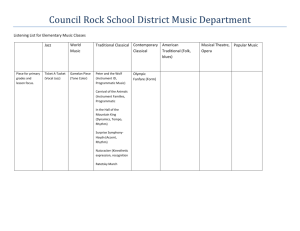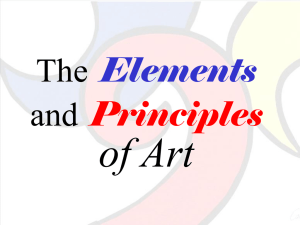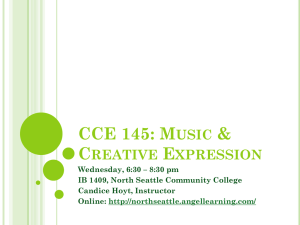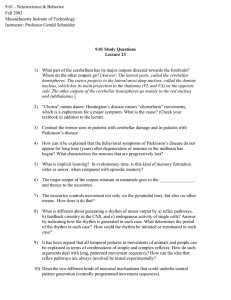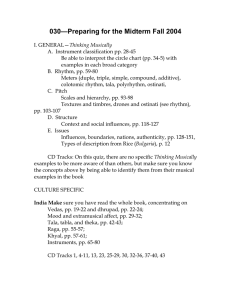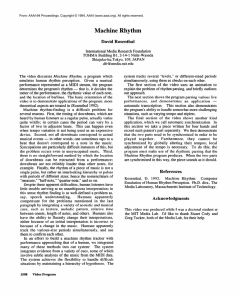Glossary of terms
advertisement
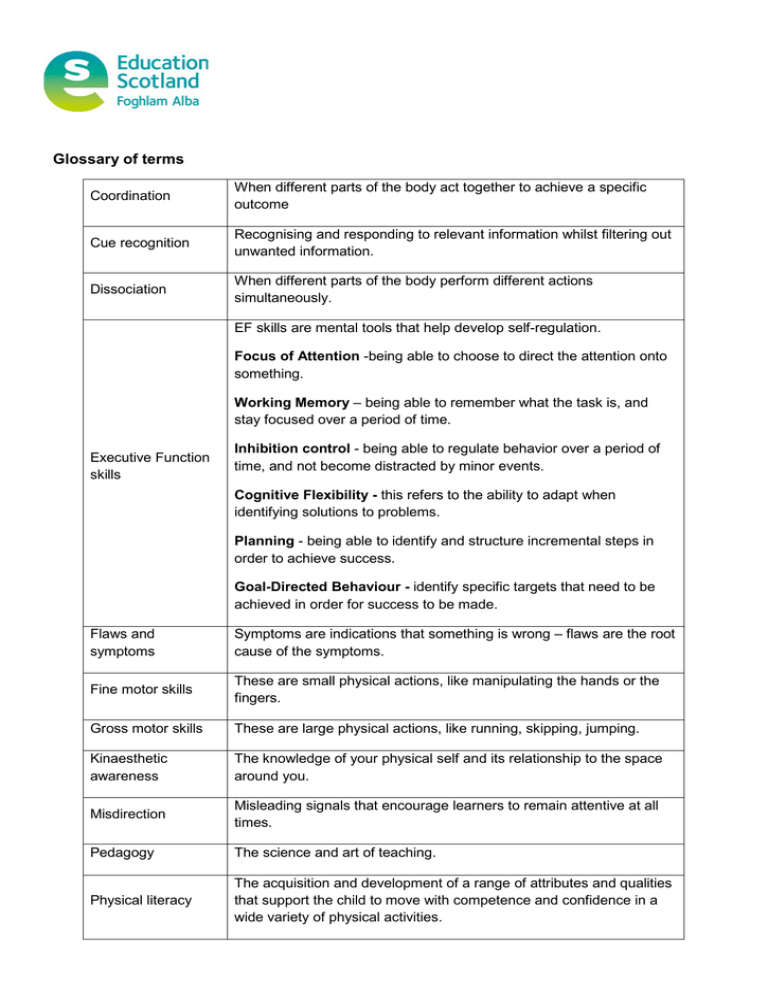
Glossary of terms Coordination When different parts of the body act together to achieve a specific outcome Cue recognition Recognising and responding to relevant information whilst filtering out unwanted information. Dissociation When different parts of the body perform different actions simultaneously. EF skills are mental tools that help develop self-regulation. Focus of Attention -being able to choose to direct the attention onto something. Working Memory – being able to remember what the task is, and stay focused over a period of time. Executive Function skills Inhibition control - being able to regulate behavior over a period of time, and not become distracted by minor events. Cognitive Flexibility - this refers to the ability to adapt when identifying solutions to problems. Planning - being able to identify and structure incremental steps in order to achieve success. Goal-Directed Behaviour - identify specific targets that need to be achieved in order for success to be made. Flaws and symptoms Symptoms are indications that something is wrong – flaws are the root cause of the symptoms. Fine motor skills These are small physical actions, like manipulating the hands or the fingers. Gross motor skills These are large physical actions, like running, skipping, jumping. Kinaesthetic awareness The knowledge of your physical self and its relationship to the space around you. Misdirection Misleading signals that encourage learners to remain attentive at all times. Pedagogy The science and art of teaching. Physical literacy The acquisition and development of a range of attributes and qualities that support the child to move with competence and confidence in a wide variety of physical activities. Pro-active decision making Rhythm and timing This is making decisions to influence situations, or solve problems before the situation actually arises. Rhythm creates the context for timing. Rhythm can be established in partnership with an external stimulus like the flight of the ball, the movement of team mates or music. Rhythm can also be established with an internal stimulus, like running or skipping. Demonstrating rhythm requires balance and relaxation. Timing appears as ‘moments of interest’ in the context (the flow) of rhythm. Same-same Significant Aspects of Learning (SALs) Scaffolding practices This term refers to situations where there is a match-up between foot patterns (left with left, right with right), or arm actions, or movement rhythms etc. with pairs or groups of people. The Significant Aspects of Learning underpin the development of performance across a range of activities. The SALs are grouped together under 4 different headings; physical competencies, cognitive skills; personal qualities; physical fitness. This term refers to practices that are designed to focus attention on an aspect of performance, and help the learner to achieve this aspect.



